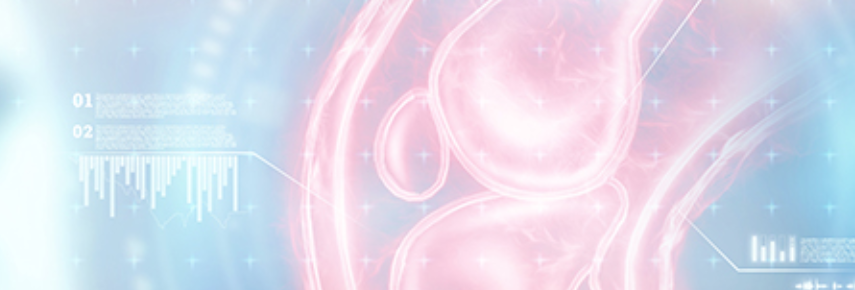Li-Ting Huang, Xinheng Zhang, Xinqi Li, Archana Malagi, Yuheng Huang, Xingmin Guan, Hao Ho, Alan Kwan, Janet Wei, Xiaoming Bi, Anthony G Christodoulou, Debiao Li, Hui Han, Yen-Wen Liu, Rohan Dharmakumar, Hsin-Jung Yang
{"title":"使用延迟期动态对比增强心脏MRI改进心肌组织表征。","authors":"Li-Ting Huang, Xinheng Zhang, Xinqi Li, Archana Malagi, Yuheng Huang, Xingmin Guan, Hao Ho, Alan Kwan, Janet Wei, Xiaoming Bi, Anthony G Christodoulou, Debiao Li, Hui Han, Yen-Wen Liu, Rohan Dharmakumar, Hsin-Jung Yang","doi":"10.1148/ryct.240393","DOIUrl":null,"url":null,"abstract":"<p><p>Purpose To evaluate the performance of a delayed-phase dynamic contrast-enhanced (dDCE) MRI model in quantitative assessment of myocardial tissue physiology and late gadolinium enhancement (LGE) within 5 minutes after contrast material injection in reperfused myocardial infarction (MI). Materials and Methods This animal study included 11 canines (seven female) with reperfused MI. A dDCE model using dynamic postcontrast T1 maps was adopted to depict an unbiased contrast material washout process. The dDCE parameters derived from the 30-minute contrast material washout process (dDCE<sub>30min</sub>) and a 5-minute image subset (dDCE<sub>5min</sub>) were compared. LGE images were synthesized from the dDCE<sub>5min</sub> maps (LGE<sub>dDCE</sub>) and compared LGE extent and transmurality with the standard LGE images acquired at 15 minutes after contrast material injection (LGE<sub>standard</sub>). Statistical analyses used paired tests for dependent group comparisons. Results The dDCE<sub>30min</sub> map demonstrated that extravascular extracellular volume and capillary permeability surface area product were higher in MI regions than in remote myocardium (61.12% ± 13.65 [SD] vs 13.43% ± 5.00; <i>P</i> = .02; 5.08 mL × g-1 × min-1 ± 4.10 vs 0.42 mL × g-1 × min-1 ± 0.55; <i>P</i> = .02, respectively). There was no evidence of differences between dDCE<sub>5min</sub> parameters and dDCE<sub>30min</sub> parameters (all <i>P</i> > .05). There was also no evidence of a difference between LGE<sub>dDCE</sub> and LGE<sub>standard</sub> in LGE area (30.65% ± 11.94 vs 30.66% ± 11.94; <i>P</i> = .99) or transmurality (54.87% ± 15.57 vs 53.27% ± 15.98; <i>P</i> = .06), but LGE<sub>dDCE</sub> demonstrated a higher contrast-to-noise ratio (14.62 ± 13.03 vs 1.41 ± 0.97; <i>P</i> < .01). The area under the receiver operating characteristic curve of MI detection using LGE<sub>dDCE</sub> was 0.97 (95% CI: 0.94, >0.99), with 94.4% sensitivity and 96.7% specificity. Conclusion The developed dDCE MRI model for myocardial tissue assessment shows potential to enhance lesion contrast, quantify clinically relevant physiologic parameters, and support comprehensive evaluation of myocardial injury in heart disease. <b>Keywords:</b> Dynamic Contrast-enhanced MRI, Myocardial Infarction, MRI, Pharmacokinetics, Ischemic Heart Disease <i>Supplemental material is available for this article.</i> © RSNA, 2025.</p>","PeriodicalId":21168,"journal":{"name":"Radiology. Cardiothoracic imaging","volume":"7 4","pages":"e240393"},"PeriodicalIF":4.2000,"publicationDate":"2025-08-01","publicationTypes":"Journal Article","fieldsOfStudy":null,"isOpenAccess":false,"openAccessPdf":"","citationCount":"0","resultStr":"{\"title\":\"Improved Myocardial Tissue Characterization Using Delayed-Phase Dynamic Contrast-enhanced Cardiac MRI.\",\"authors\":\"Li-Ting Huang, Xinheng Zhang, Xinqi Li, Archana Malagi, Yuheng Huang, Xingmin Guan, Hao Ho, Alan Kwan, Janet Wei, Xiaoming Bi, Anthony G Christodoulou, Debiao Li, Hui Han, Yen-Wen Liu, Rohan Dharmakumar, Hsin-Jung Yang\",\"doi\":\"10.1148/ryct.240393\",\"DOIUrl\":null,\"url\":null,\"abstract\":\"<p><p>Purpose To evaluate the performance of a delayed-phase dynamic contrast-enhanced (dDCE) MRI model in quantitative assessment of myocardial tissue physiology and late gadolinium enhancement (LGE) within 5 minutes after contrast material injection in reperfused myocardial infarction (MI). Materials and Methods This animal study included 11 canines (seven female) with reperfused MI. A dDCE model using dynamic postcontrast T1 maps was adopted to depict an unbiased contrast material washout process. The dDCE parameters derived from the 30-minute contrast material washout process (dDCE<sub>30min</sub>) and a 5-minute image subset (dDCE<sub>5min</sub>) were compared. LGE images were synthesized from the dDCE<sub>5min</sub> maps (LGE<sub>dDCE</sub>) and compared LGE extent and transmurality with the standard LGE images acquired at 15 minutes after contrast material injection (LGE<sub>standard</sub>). Statistical analyses used paired tests for dependent group comparisons. Results The dDCE<sub>30min</sub> map demonstrated that extravascular extracellular volume and capillary permeability surface area product were higher in MI regions than in remote myocardium (61.12% ± 13.65 [SD] vs 13.43% ± 5.00; <i>P</i> = .02; 5.08 mL × g-1 × min-1 ± 4.10 vs 0.42 mL × g-1 × min-1 ± 0.55; <i>P</i> = .02, respectively). There was no evidence of differences between dDCE<sub>5min</sub> parameters and dDCE<sub>30min</sub> parameters (all <i>P</i> > .05). There was also no evidence of a difference between LGE<sub>dDCE</sub> and LGE<sub>standard</sub> in LGE area (30.65% ± 11.94 vs 30.66% ± 11.94; <i>P</i> = .99) or transmurality (54.87% ± 15.57 vs 53.27% ± 15.98; <i>P</i> = .06), but LGE<sub>dDCE</sub> demonstrated a higher contrast-to-noise ratio (14.62 ± 13.03 vs 1.41 ± 0.97; <i>P</i> < .01). The area under the receiver operating characteristic curve of MI detection using LGE<sub>dDCE</sub> was 0.97 (95% CI: 0.94, >0.99), with 94.4% sensitivity and 96.7% specificity. Conclusion The developed dDCE MRI model for myocardial tissue assessment shows potential to enhance lesion contrast, quantify clinically relevant physiologic parameters, and support comprehensive evaluation of myocardial injury in heart disease. <b>Keywords:</b> Dynamic Contrast-enhanced MRI, Myocardial Infarction, MRI, Pharmacokinetics, Ischemic Heart Disease <i>Supplemental material is available for this article.</i> © RSNA, 2025.</p>\",\"PeriodicalId\":21168,\"journal\":{\"name\":\"Radiology. Cardiothoracic imaging\",\"volume\":\"7 4\",\"pages\":\"e240393\"},\"PeriodicalIF\":4.2000,\"publicationDate\":\"2025-08-01\",\"publicationTypes\":\"Journal Article\",\"fieldsOfStudy\":null,\"isOpenAccess\":false,\"openAccessPdf\":\"\",\"citationCount\":\"0\",\"resultStr\":null,\"platform\":\"Semanticscholar\",\"paperid\":null,\"PeriodicalName\":\"Radiology. Cardiothoracic imaging\",\"FirstCategoryId\":\"1085\",\"ListUrlMain\":\"https://doi.org/10.1148/ryct.240393\",\"RegionNum\":0,\"RegionCategory\":null,\"ArticlePicture\":[],\"TitleCN\":null,\"AbstractTextCN\":null,\"PMCID\":null,\"EPubDate\":\"\",\"PubModel\":\"\",\"JCR\":\"Q1\",\"JCRName\":\"RADIOLOGY, NUCLEAR MEDICINE & MEDICAL IMAGING\",\"Score\":null,\"Total\":0}","platform":"Semanticscholar","paperid":null,"PeriodicalName":"Radiology. Cardiothoracic imaging","FirstCategoryId":"1085","ListUrlMain":"https://doi.org/10.1148/ryct.240393","RegionNum":0,"RegionCategory":null,"ArticlePicture":[],"TitleCN":null,"AbstractTextCN":null,"PMCID":null,"EPubDate":"","PubModel":"","JCR":"Q1","JCRName":"RADIOLOGY, NUCLEAR MEDICINE & MEDICAL IMAGING","Score":null,"Total":0}
引用次数: 0

 求助内容:
求助内容: 应助结果提醒方式:
应助结果提醒方式:


